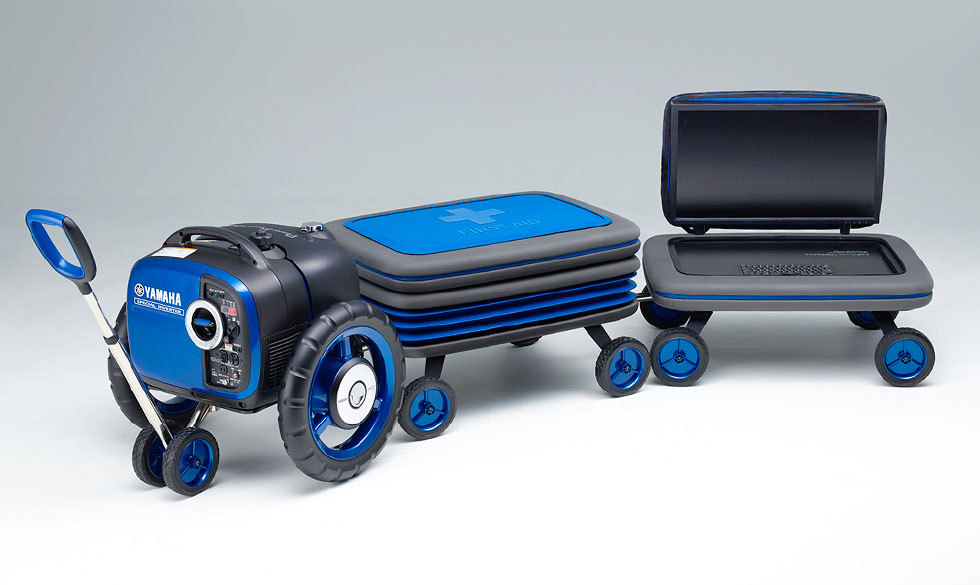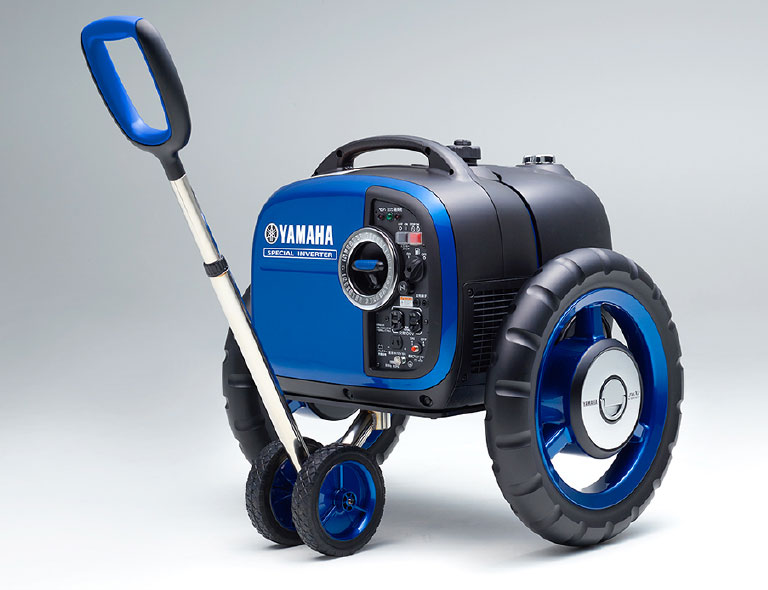Living in Japan entails living alongside natural disasters, from earthquakes and typhoons to floods and heavy snowstorms, and the chance of being affected by them is by no means small. More recently, the awareness of how important it is to keep a store of necessities like emergency food supplies and a disaster kit to see through post-disaster adversity has grown among both local governments and the populace.
Amid this growing awareness of disaster preparedness in Japanese society, Yamaha Motor set up a project to explore what we can do for the future in this field as a company dedicated to offering new Kando and more fulfilling lives to people everywhere. The result of this project was the planning and development of the “Power Assist Cargo,” a concept model leveraging a wide range of Yamaha products and technologies to create a new kind of disaster support kit. Emergency supplies for disasters are typically kept separately in storerooms and moving them to where they are needed often requires a cart or cargo trolley. The Power Assist Cargo packages together a wide variety of these emergency supplies into one mobile unit, allowing a single person to transport numerous items.
When asked to transform this idea into a working concept, the designers felt there was a need to look further into the possibilities of packaging various disaster products and supplies into modules to increase their inherent value. They got to work by first analyzing in detail how people actually move about in disaster situations and what things they need.
From the time a disaster strikes, evacuation within the first 72 hours is critical; rescue operations conducted within this time span are widely considered essential to the chances of survival for people still in the immediate disaster area. As time passes from then to life in evacuation shelters and an eventual return to normalcy, the conditions victims face and their needs change with each stage of progression.
The designers set to work by visualizing the various things disaster victims need most as they go from the crisis that follows a disaster to getting back to daily life, and they came up with ideas for possible solutions at each stage. Looking at the ideas they brainstormed at this point in the project, it’s clear that they considered a broad range of approaches from different perspectives. One idea was an electrically power-assisted cart for the average person to easily haul emergency necessities with, while another was aimed at use by companies and governments, pairing a medical and communications package with Yamaha’s unmanned helicopters.
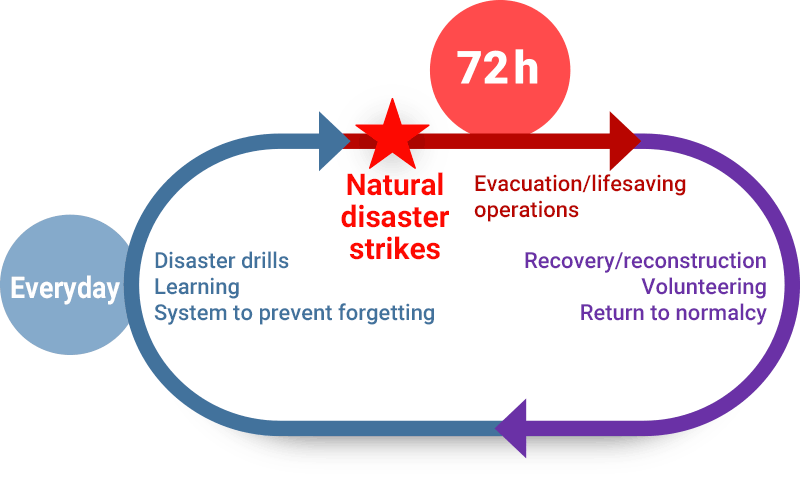
The critical issue they finally arrived at was loading and transporting an electric power source and key disaster supplies and equipment. From the immediate aftermath of a disaster until daily life begins to return to normal, electricity remains an essential need and people and supplies are almost always on the move. But in reality, disasters often lead to power outages and emergency goods being left undistributed despite being delivered to critical areas. Furthermore, on top of manpower becoming limited in times of disaster, levels of stress and exhaustion skyrocket. In light of these facts, a disaster support tool that made it easy for anyone to efficiently transport a vital source of electric power and emergency supplies gradually took shape as a concept model in the minds of the project members.
There was one more facet the designers had to address—the construction of and unexpected perception surrounding disaster aid equipment. Many people carry a negative image of disaster aid items because they are designed specifically for that purpose. This is also why they tend to be kept out of sight and forgotten in closets and the like. This means they don’t receive the regular maintenance they need, which in turn makes people anxious about whether or not the tools will function properly when the time to use them finally comes.
That led the designers to the concept of a “crossover” between everyday use and emergency use. A tool with no boundary between the two would naturally mean greater frequency of use in general, and thereby naturally spur owners to keep it well maintained. What’s more, changing the perception of disaster aid items to be something used in daily life would also naturally encourage people to be prepared with a stock of emergency items for times of disaster. The aim became to design something fun and exciting that people would be happy to take with them on camping trips, to the local festival or for other fun activities, thus disassociating them with disasters. It was a uniquely Yamaha idea of changing even items and equipment for disaster readiness into something fun to use.
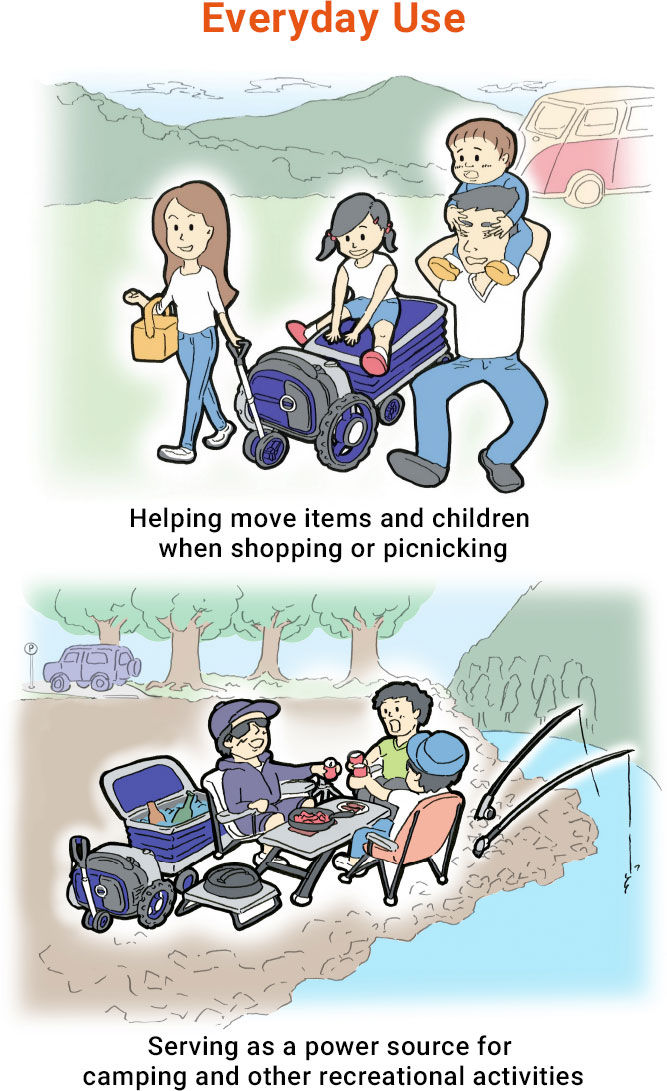
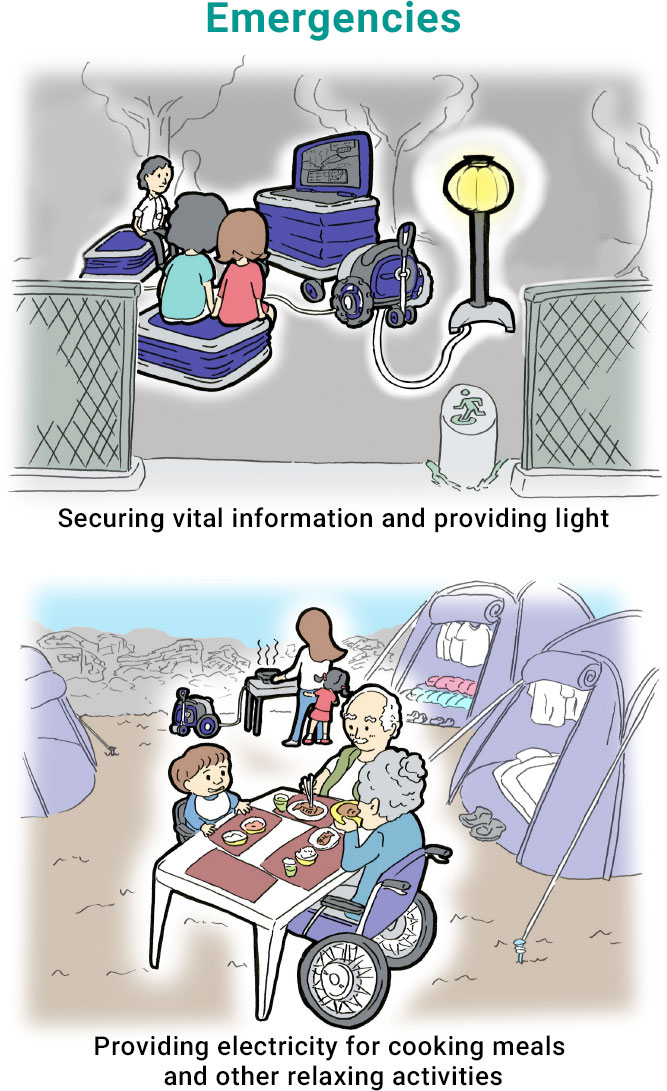
In developing this new tool, the designers created a plethora of sketches to propose specific ways to use it in both everyday and emergency situations and scenarios. Among the envisioned scenes was using electricity to light up the area and relieve anxiety, using it to heat up water for a relaxing foot bath, or heating water to make a heart-warming cup of tea. The sketches illustrate how the designers thought long and hard about what disaster victims experience emotionally, looking for ways to use the concept model to return a sense of normalcy to their lives wherever possible.
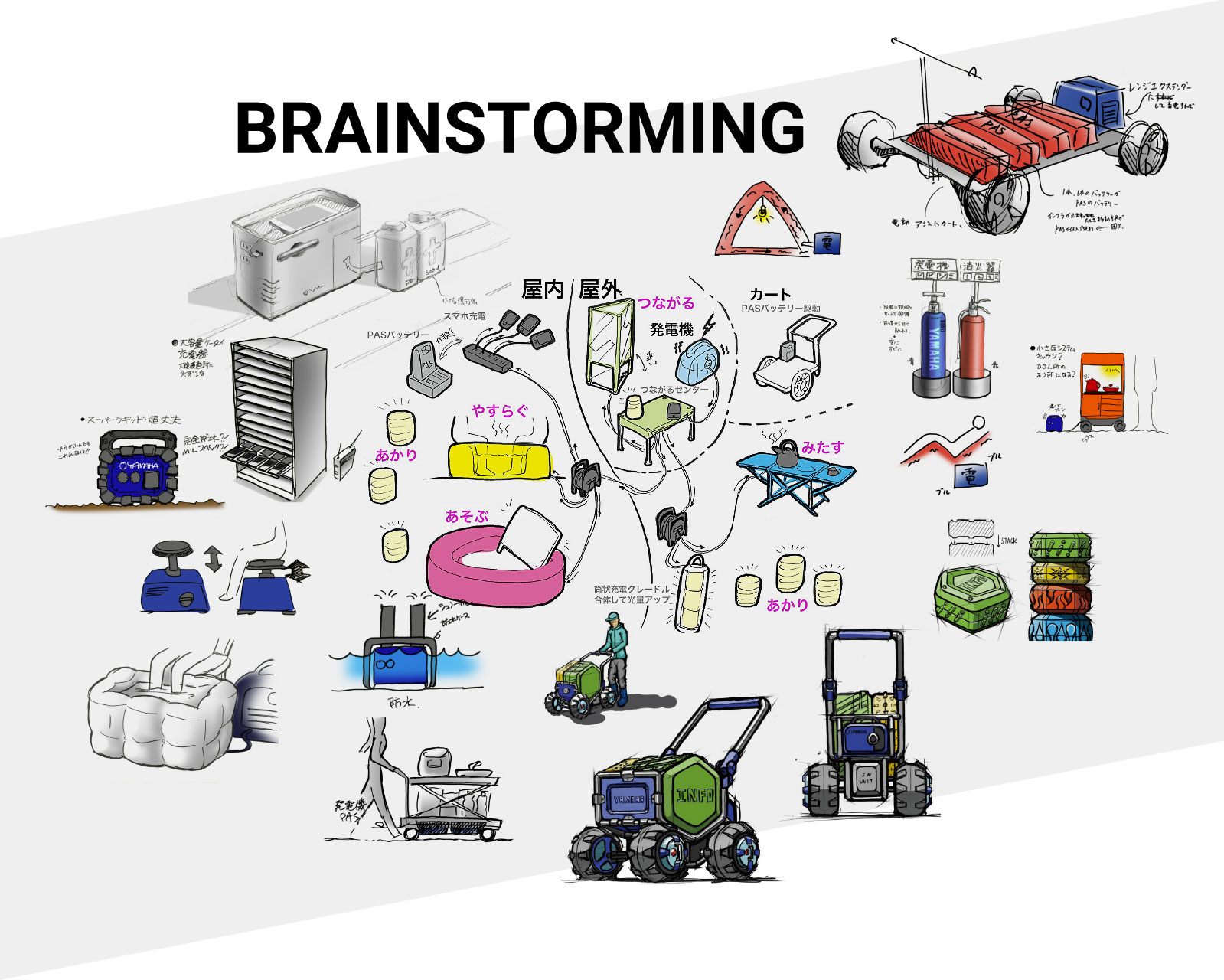
The Power Assist Cargo concept model packaging various tools and supplies for disaster aid is what emerged from this project. Equipped with Yamaha’s electric power-assist drive system, the arrangement is similar to a freight train; the “Locomotive” out in front is a portable generator that provides the electricity for the power-assisted drive wheels and works to pull the Cargo “freight car” units behind it. The generator also does double duty, serving as a capacitor to power other equipment in the case of disaster. At the same time, it remains a handy portable power source to use while outside, from camping and outdoor gatherings to local festivals.
The Cargo units pulled by the Locomotive can be linked together and are designed to carry a variety of disaster aid and household items. The expandable container units also enable the user to store communication equipment, food, beverages and more for simple loading and easy transport. Furthermore, these “freight cars” can be added or removed to suit the type and volume of items to transport, giving the Power Assist Cargo the flexibility to accommodate a wide range of uses for families, schools, local governments and more.
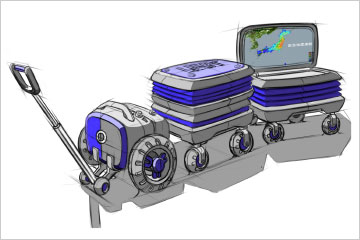
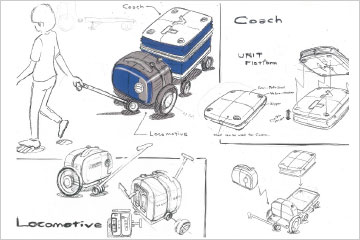
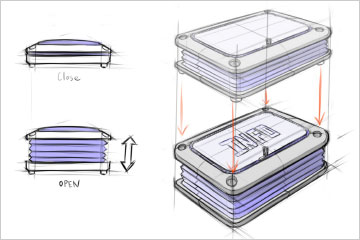
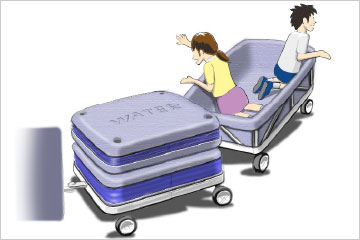
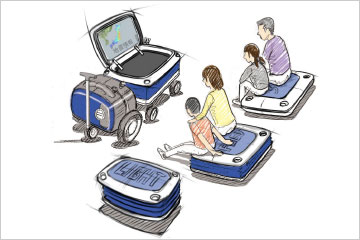
The Power Assist Cargo’s Locomotive uses Yamaha’s EF1600iS inverter generator and the power-assist drive unit and lithium-ion battery from our JW Series of power-assisted electric wheelchairs. Bringing together and rearranging several proprietary Yamaha Motor technologies in an inventive way, the Power Assist Cargo represents an innovative angle to tools and equipment for disaster preparedness. Just looking at its tough form and construction entices you to take it outdoors, and together with the expandable design that sparks exciting new ideas for use, this package is sure to bring calm and peace of mind to those unfortunately hit by a natural disaster.
The Power Assist Cargo was born of meticulous analysis of the real needs that arise when disaster strikes and across a multitude of possible scenarios. What unites them all is the fundamental need to transport items. Going the extra step beyond the functionality of the product itself, the designers pulled down the wall separating everyday and emergency use of disaster items by “designing away” the negative perceptions and construction associated with them. This very bold but very Yamaha approach of introducing fun even into items and equipment for disaster readiness just may kick off a sea change in disaster awareness in people’s lifestyles.
